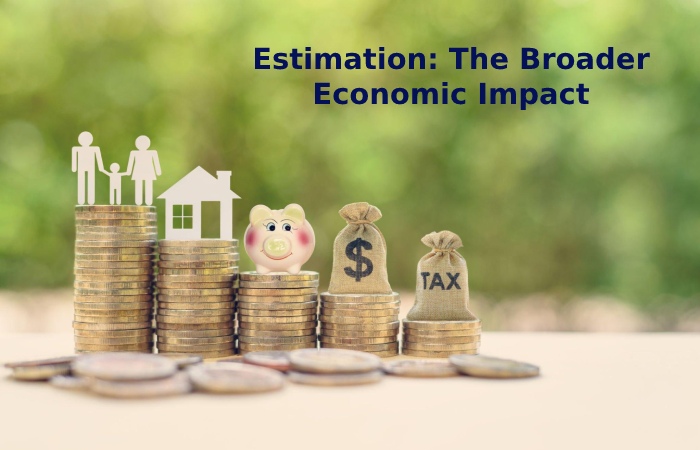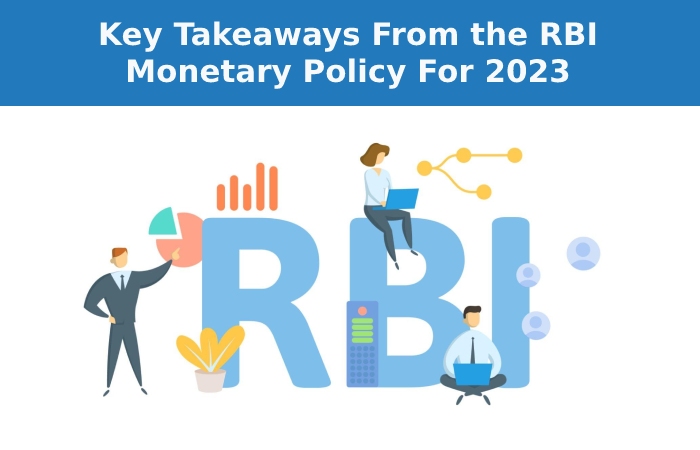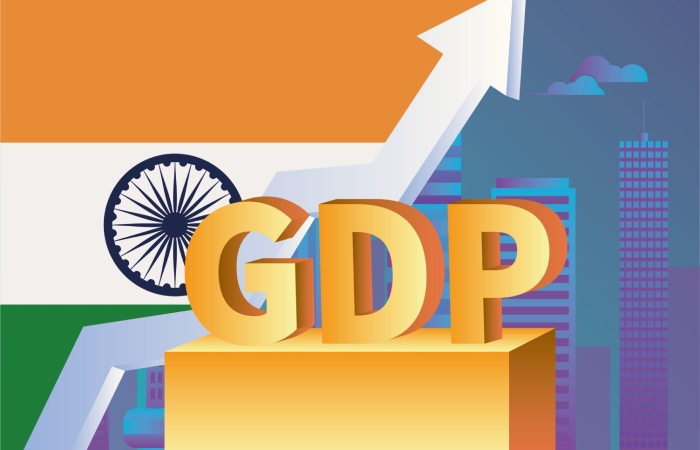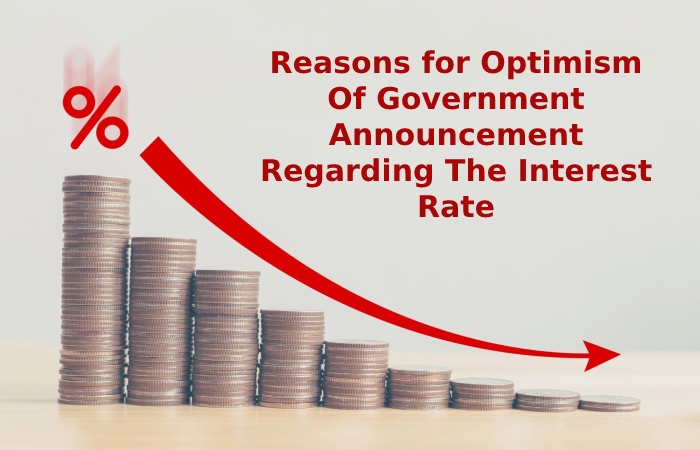Government Announcement Regarding The Interest Rate – Today we will discuss the government’s big announcement regarding the interest rate. The main move, the Indian government has announced an essential change in the interest rate landscape for 2023. This case study will analyze the influence of this announcement on the Indian economy, concentrating on the RBI [Reserve Bank of India’s] repo rate modification. We will deliver examples and estimates and discuss the new interest rate government updates.
This change will significantly impact what you can afford and how much you’ll pay on your loans. If you’re borrowing money, this change means you may have to pay more interest. And if you’re already struggling to make your payments, this could mean that you lose your home or car loan altogether.
What is the Interest Rate And Explain The Background of Interest Rates in the Country?

The interest rate is the cost of borrowing money and the rate at which banks lend money to individuals and businesses. The interest rate is crucial because it affects the overall cost of borrowing and credit availability in the economy. A high-interest rate makes borrowing expensive and reduces the availability of credit, while a low-interest rate makes borrowing cheaper and increases the availability of credit.
Background of Interest Rates in the Country
Interest rates in the country have fluctuated over time. Historically, interest rates have been high, and borrowing has been expensive. However, interest rates have been low in recent years, and borrowing has been more affordable. The government has played a role in setting interest rates, and its policies have significantly impacted the economy.
Introduction To the Recent Announcement by the Government Regarding The Interest Rate

Government Announcement Regarding Interest Rate – The recent announcement by the government regarding significant changes to interest rates has sparked much discussion. And debate among financial experts and consumers alike. The government has decided to reduce the benchmark policy rate from 7.5% to 6%, which expects to impact the economy significantly.
The reduction in interest rates is part of an effort by the government to promote economic growth. And provide relief for individuals struggling financially due to high borrowing costs. This move will make loans more affordable, including mortgages, car, and personal loans. As a result, consumer spending expectations increase, stimulating economic growth.
While some experts have praised this move as a necessary step towards improving the economy. Moreover, others are concerned about potential inflationary pressures that may arise due to lower interest rates. Additionally, there are concerns about how these changes may affect savers who rely on income from savings accounts or other fixed-income investments such as bonds or CDs. Regardless of these concerns, it is clear that this recent announcement by the govt. will have far-reaching effects on consumers and businesses across various sectors of the economy.
Examples Of Impacts By Government Announcement Regarding The Interest Rate

Impact on Home Loan Borrowers
To know the effect of this interest rate cut, let’s do an example of a home loan borrower named Priya. Earlier, from a commercial bank, Priya found a home loan of INR 5,000,000 at an interest rate of 8.5%. Thru the repo rate reduced by 75 basis facts, the bank can lower its lending rate, making it more reasonable for Priya to borrow money.
Pretentious, the bank passes on the full rate cut to Priya, decreasing the interest rate on her homegrown loan to 7.75%. Her total interest payment over a 20-year term will be significantly diminishing. This reduction in interest expense consents Priya to save more money or even deliberately prepay her loan.
Impact of the Interest Rate Changes on Individuals and Businesses

The recent announcement of significant changes to interest rates by the government has raised concerns among individuals and businesses. The impact of these changes will be handled differently by different sectors, but overall they are expected to affect the economy significantly.
For individuals, changes in interest rates can affect their borrowing power and savings. Those with loans or mortgages may see an increase in their monthly repayments, while savers may see lower returns on their deposits. It could lead to reduced spending and slower economic growth.
Businesses will also be affected by the changes in interest rates as they may impact investment decisions and financing options. Higher interest rates could make borrowing more expensive for businesses, leading to decreased investment and hiring. On the other hand, lower interest rates could encourage borrowing and stimulate business activity.
Estimation: The Broader Economic Impact

Thus, the repo rate cut by the RBI will have a more comprehensive, macro-level impact on the Indian economy. The rate reduction expects to reassure borrowing and spending, which will, in turn, estimate economic growth. The approximation is that India’s GDP development will accelerate over the upcoming few years due to this monetary policy modification.
RBI Repo Rate: New Update
Therefore, the new repo rate of 3.25% is among the least in India’s recent history, and this decision reflects the RBI’s obligation to spur economic activity and relieve borrowers. In any case, it is fundamental to note that interest rates might depend upon changes relying upon inflation and other economic variables.
Key Takeaways From the RBI Monetary Policy For 2023

Repo Rate:
It refers to the interest rate at which the RBI lends money to business banks. Thus, the changes in the repo rate affect bank interest rates on loans and deposits. Loans become more expensive as the repo rate rises, while loans become less expensive when it falls.
Reverse Repo Rate:
The rate at which the RBI borrows money from commercial banks. An increase in the reverse repo rate makes it more attractive for banks to park their funds with the RBI, while a decrease has the opposite effect.
Cash Reserve Ratio (CRR):
The percentage of total bank deposits must maintain with the RBI as cash reserves. As a result, while a fall in CRR frees up more money for lending, increasing CRR decreases the amount of money banks have available to lend, limiting economic growth.
Statutory Liquidity Ratio (SLR):
The proportion of government securities is held against total bank deposits. As a result, changes to the SLR impact the funds that banks have available for lending.
Inflation Targeting:
The RBI’s primary goal is to maintain price stability, usually by targeting a specific inflation rate. The central bank may adjust its monetary policy tools to achieve this goal.
GDP Growth Forecast:

With the release of the RBI’s economic growth outlook, expectations for the next monetary policy decision are partial.
Currency Management:
The RBI may take measures to manage the exchange rate of the Indian Rupee, such as intervention in the foreign exchange market or adjustments to the Foreign Exchange Reserves.
Liquidity Management:
The central bank may implement measures to manage liquidity in the banking system, including open market operations, term repos, or long-term repo operations.
Financial Stability:
The RBI may announce steps to ensure financial stability, such as regulatory and supervisory measures, bank capital requirements, and macro-prudential measures.
Communication:
The Monetary Policy Committee (MPC) meeting minutes, the statement of the RBI governor, and the press release all provide the central bank’s analysis of the status of the economy and the justifications for its policy choices.
Reasons for Optimism Of Government Announcement Regarding The Interest Rate

-
Government Policies:
The Indian government has been executing different pro-business policies, including tax reforms, framework speculations, and loan fee cuts, establishing a more helpful climate for business development. Regardless of new interest rates, the business is probably going to thrive.
-
Digitization and Technological Advancements:
India has witnessed rapid digitization and the adoption of cutting-edge technologies, for example, artificial intelligence, machine learning, and blockchain. This digital revolution has opened up new prospects and enabled businesses to progress their productivity and reach larger markets.
-
Growing Middle Class:
India’s growing middle class offers a vast market for goods and services. Driving demand across numerous sectors, including consumer goods, healthcare, and education.
-
Skilled Workforce:
The country claims a large, talented workforce that can drive innovation and propel businesses forward.
-
Global Trade Opportunities:
As international trade dynamics evolve, Indian businesses are well-positioned to capitalize on emerging global markets and expand their presence in existing ones.
CEOs’ Expectations for Economic Growth By Government Announcement Regarding The Interest Rate

Many Indian CEOs expect healthy economic growth in the upcoming years. Favorable government policies, technological advancements, and a thriving consumer market fuel their optimism.
For example, the recent interest rate cuts by the RBI are expected to inspire borrowing and investment, ultimately leading to higher economic growth. Moreover, “Make in India” and “Digital India” aim to boost manufacturing and foster innovation, enhancing the country’s economic prospects.
In addition, Indian CEOs expect the country’s growing middle class to continue driving demand for goods and services, generating new opportunities for businesses across many sectors. Everything will follow RBI monetary policy.
The positive perspective of Indian CEOs regarding the country’s economic development demonstrates the potential ahead. As government strategies, mechanical advancements, and customer demand keep establishing an ideal climate. Organizations in India strategically jump all over the changes introduced by the developing economic landscape. It will add to the country’s general development and prosperity. Thus, guaranteeing a more promising brighter future for India and its residents.
Conclusion
In conclusion, the government’s recent announcement regarding major changes to interest rates has significant implications for individuals, businesses, and the economy. Deciding to increase or decrease interest rates can positively and negatively affect various aspects of financial life, including borrowing and saving.
The Indian government’s announcement of a 75-basis point decrease in the repo rate for 2023 is a deliberate move to boost economic growth. By manufacturing borrowing more affordable, businesses can invest in expansion, and consumers can increase spending, contributing to overall economic growth.
Related posts
Featured Posts
What Is A Web Project? – Phases For Planning, and More
Introduction Web Project The term ” web project ” can designate different development types, including technical creation, content management, data,…
10 Benefits of Eating Roasted Gram
In this article, we will talk about the 10 benefits of eating roasted gram. The roasted gram is also known…


